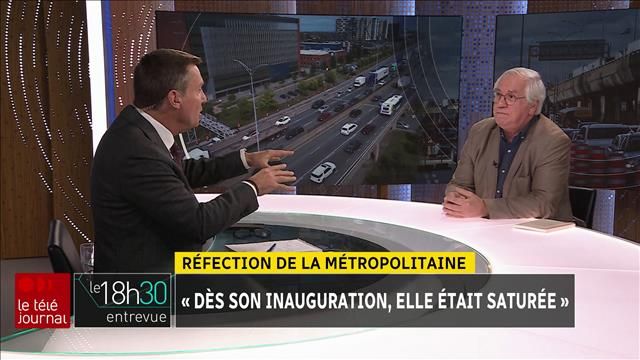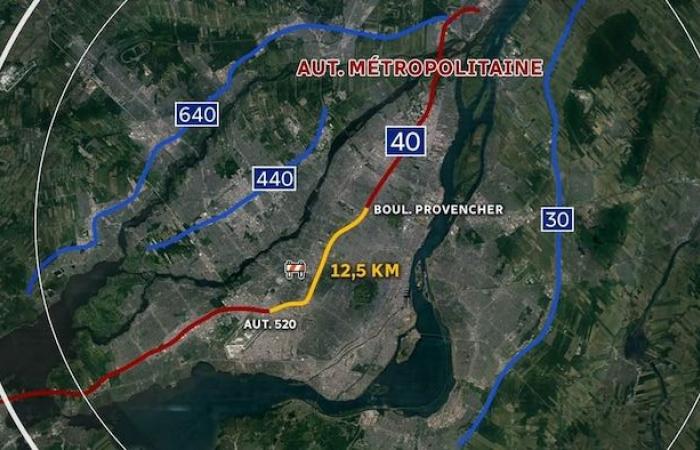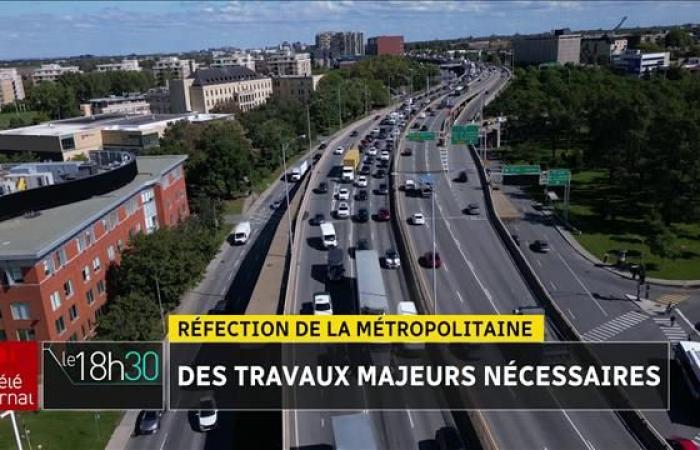Often the scene of monster traffic jams, a long section of Highway 40 will soon be renovated. Is this an opportunity to rethink the design of part of the Metropolitan? Several experts agree that it will be very difficult to conceive it otherwise.
Every day, 200,000 vehicles, including 25,000 trucks, use this road. It is not uncommon to find yourself driving well below the permitted limit, or even being completely stopped, due to heavy traffic.
Slabs, slides, lighting system, drainage system, deck joints, running surface… all elements of the bridge will be modernized, indicates Sarah Bensadoun, spokesperson for the Ministry of Transport and Sustainable Mobility.
Some people see this future work as an opportunity to rethink the highway which saw the light of day more than 60 years ago. The mayor of Villeray–Saint-Michel–Parc-Extension, Laurence Lavigne-Lalonde, deplores that the many years of very heavy work
will lead to a seemingly identical highway.
The section as it currently stands has, according to her, an impact on the health of citizens who live nearby. The future construction site could help make the neighborhood more attractive, she believes.
Open in full screen mode
In yellow, the portion of the Metropolitan highway (40) which will be renovated. This section extends from Highway 520 (Côte-de-Liesse interchange) to Provencher Boulevard.
Photo : -
Unfortunately, I don’t see much potential for improvement.
says urban planner Richard Bergeron.
Same story with the distinguished urban planner Gérard Beaudet who does not seem to see any solutions to the current design of the bridge.
Saturated from the start
Built from 1960, this road axis was initially not intended to play the role of a highway, but rather a bypass boulevard, explains Gérard Beaudet, in an interview with Patrice Roy. The Métropolitaine was built on stilts so as not to harm urban development.
However, today it is the only highway that crosses Montreal from east to west. In addition, it has no effective bypass route since highways 30 and 440 are too far away or too difficult to access.
Mathieu Prost’s report
Worse still, the road was saturated as soon as it was inaugurated since the population growth rates and the increase in automobile travel were poorly assessed.
This problem is all the more relevant because the number of vehicles on Quebec roads continues to grow at the rate of 85,000 new vehicles per year for 10 years.
However, Gérard Beaudet insists on the fact that while motorists generally manage to adapt to road closures and traffic obstructions, delivery trucks are often unable to do so, in particular due to the unique status of is to the west of this 12.5 kilometer section.
Other options
Would a highway tunnel like Boston’s “Big Dig” be possible? No more, experts say. The cost is certainly the first pitfall, since no less than 2.7 billion Canadian dollars were spent to build the Boston tunnel of more than 12 kilometers from 1999 to 2002.

Patrice Roy’s interview with emeritus urban planner Gérard Beaudet
For the game to be worth the candle, the land value of the various lands and subdivisions above said tunnel would have to be high enough for investors to derive a financial advantage. For example, the land to which the Ville-Marie tunnel leaves open space has a property value high enough to justify its maintenance.
With information from Mathieu Prost








